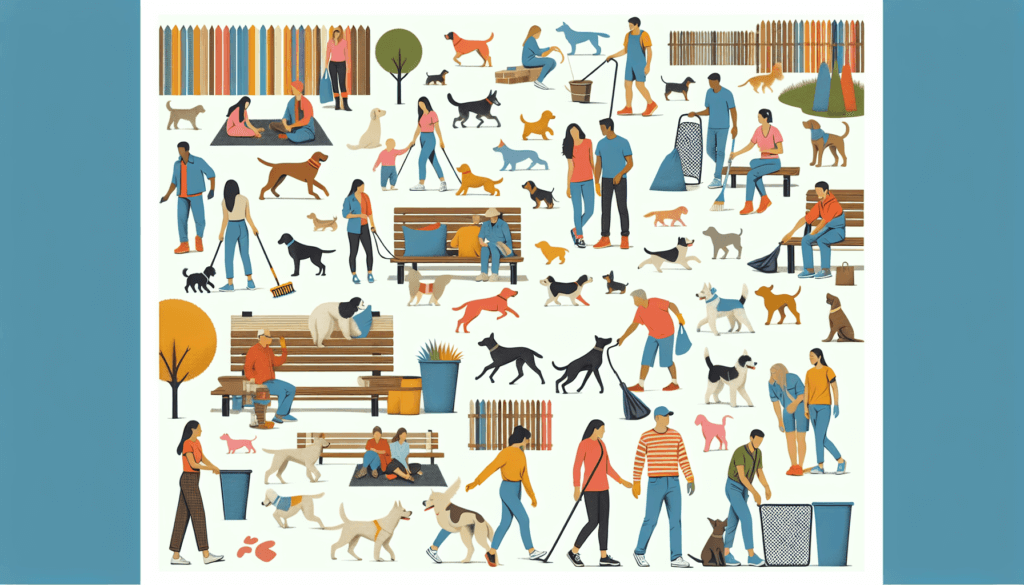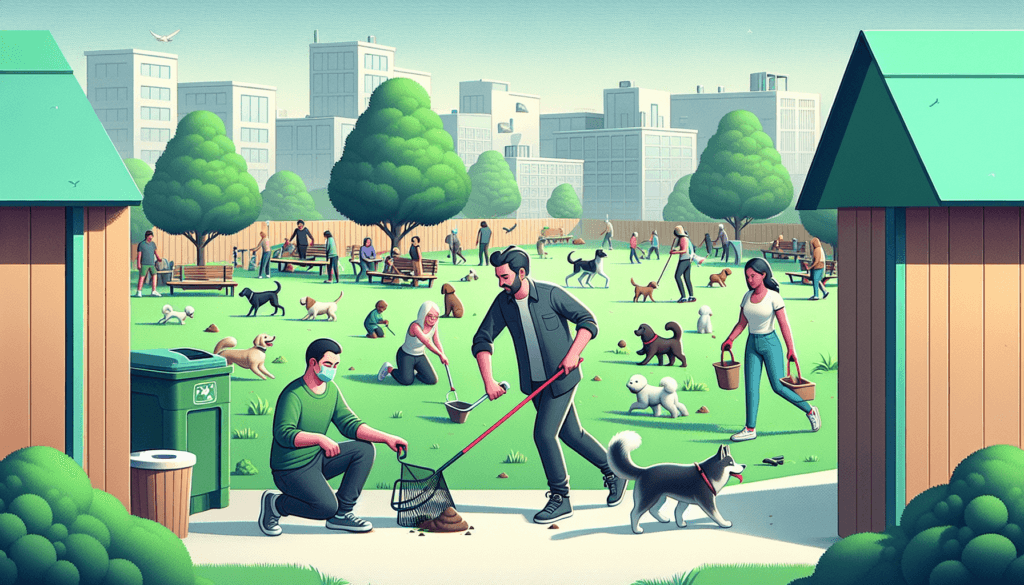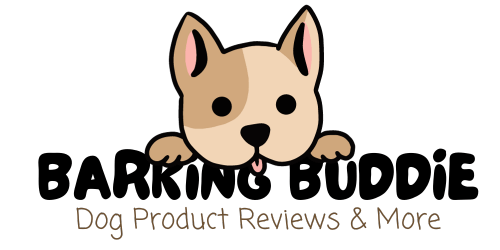Are you a dog lover who enjoys taking your furry friend to the local dog park? If so, you know the importance of having a well-maintained space for your canine companion to play and socialize. However, dog park maintenance is often overlooked, and the responsibility to advocate for it falls on the community members. In this article, you will discover the best strategies to effectively advocate for dog park maintenance in your community, ensuring that both you and your four-legged friend can continue enjoying a safe and clean environment.

Create a Petition
Creating a petition is an effective way to demonstrate community support and demand action for dog park maintenance. Start by drafting a clear and concise petition that outlines the issues with the current state of the dog park and the desired improvements. Include specific objectives such as repairing damaged fences, adding waste disposal stations, or upgrading the overall infrastructure. Once the petition is ready, gather signatures from fellow dog owners, park visitors, and local residents who share your concerns. Visit community events, dog-friendly establishments, and public places to collect as many signatures as possible.
After collecting a significant number of signatures, it’s time to present the petition to local authorities. Compile the signatures, ensuring they are organized and easily accessible. Prepare a formal letter or document summarizing the key points of the petition and include the list of signatures as proof of community support. Schedule a meeting with relevant local authorities, such as city council members or park managers, to present the petition. During the meeting, clearly articulate the reasons behind the petition, share personal stories or anecdotes, and emphasize the importance of a well-maintained dog park. Be prepared to answer questions and provide additional information as needed. By presenting the petition, you are making a strong statement about the community’s desire for improved dog park maintenance.
Organize a Community Meeting
Organizing a community meeting is an excellent way to bring together like-minded individuals who share a common goal of advocating for dog park maintenance. Start by selecting a suitable date and venue for the meeting. Consider choosing a central location within the community that is easily accessible for all interested individuals. Additionally, ensure that the venue has sufficient space to accommodate the expected number of attendees comfortably.
Once the logistics are in place, it’s time to invite community members and stakeholders. Utilize various communication channels such as community bulletin boards, social media platforms, local newsletters, and word of mouth to spread the word about the meeting. Clearly state the purpose of the meeting, emphasizing the need to discuss dog park maintenance and brainstorm potential solutions. Encourage members of the community, including dog owners, local businesses, and organizations, to attend and contribute their ideas and perspectives.
To make the most of the meeting, prepare a comprehensive agenda in advance. Break down the agenda into specific topics, ensuring that each point is relevant to the goal of advocating for dog park maintenance. Share the agenda with the invited participants before the meeting to allow them to come prepared with their thoughts and suggestions. During the meeting, act as a facilitator to ensure that discussions remain focused and productive. Take notes on key points, ideas, and action items to refer back to later.
Build a Coalition
Building a coalition is a powerful way to amplify your advocacy efforts for dog park maintenance. Reach out to local businesses and organizations that have a vested interest or are passionate about dog-related issues. Explain your objectives and the benefits of collaborating to improve the dog park. Building partnerships and collaborations with like-minded entities will not only strengthen your advocacy work but also share responsibilities and resources.
When reaching out to potential coalition members, emphasize the collective impact that can be achieved by working together. Highlight the benefits of a well-maintained dog park, such as increased community health, economic growth, and social cohesion. Explore potential areas of collaboration, such as joint fundraising events, volunteer initiatives, or educational campaigns. By pooling resources and leveraging each other’s strengths, you can create a more influential and impactful advocacy movement.
Educate and Raise Awareness
Educating the community and raising awareness about the importance of dog park maintenance is crucial in garnering support. Host informational events where experts can share knowledge about the benefits of well-maintained dog parks and provide tips for responsible dog ownership. Utilize various platforms, including community centers, schools, and local libraries, to reach a wide range of individuals.
In addition to informational events, distribute educational materials such as brochures, pamphlets, or flyers. These materials should address common concerns or misconceptions regarding dog park maintenance and emphasize the positive impacts on both dogs and their owners. Consider partnering with local veterinarians, trainers, or pet supply stores to distribute these materials widely.
In today’s digital age, social media and online platforms are instrumental in raising awareness. Create a social media presence for your advocacy campaign, sharing news, updates, success stories, and educational content regularly. Engage with the community by responding to comments, questions, and concerns promptly. Additionally, reach out to local media outlets, both traditional and digital, to share your advocacy work and raise public awareness about the need for dog park maintenance.

Fundraising for Maintenance Costs
One of the biggest challenges in maintaining a dog park is securing the necessary funding. Organizing fundraising events can help generate the financial resources required for ongoing maintenance efforts. Consider hosting events such as dog walks, fun runs, raffles, or pet-themed auctions to attract participants and donors. Collaborate with local businesses and organizations to sponsor these events or provide in-kind donations such as venue space, refreshments, or prizes.
Applying for grants and sponsorships is another way to secure funding for dog park maintenance. Research and identify relevant grant opportunities from local, regional, or national organizations that support community initiatives or pet-related projects. Craft compelling grant proposals that highlight the positive impact of a well-maintained dog park on the community. Additionally, reach out to local businesses that may be interested in sponsoring the dog park or specific maintenance projects. Offer recognition or promotional opportunities in return for their support.
To establish a sustained revenue stream, consider implementing a donation program. Encourage community members, dog owners, and park visitors to make regular or one-time monetary contributions towards dog park maintenance. Clearly communicate how these funds will be utilized and the long-term benefits they will provide. Provide convenient donation options, such as online platforms or designated collection boxes at the dog park.
Lastly, creating a maintenance budget is essential for financial transparency and accountability. Determine the recurring and one-time maintenance costs, including expenses for cleaning supplies, repairs, landscaping, waste disposal, and equipment. Develop a detailed budget that outlines these expenses and allocate funds accordingly. Regularly review the budget and adjust as necessary to ensure the effective and efficient allocation of resources.
Volunteer Initiatives
Volunteers are invaluable in maintaining a dog park and ensuring its cleanliness and functionality. Recruit individuals from the community who are enthusiastic about dog park maintenance. Reach out to dog owners, animal enthusiasts, students, or community service organizations who may be interested in contributing their time and skills.
In order to maintain a clean and safe park, organize regular clean-up days where volunteers can gather to pick up litter, empty waste bins, or remove debris. Assign specific maintenance tasks to volunteers, such as repairing fences, painting, or planting flowers. Provide training and supervision to ensure that tasks are completed safely and correctly.
Creating a sense of ownership and pride among volunteers is crucial in maintaining long-term volunteer involvement. Recognize their efforts and express gratitude for their contributions regularly. Develop a system for tracking volunteer hours and achievements, and publicly acknowledge their dedication through newsletters, website features, or community events. Additionally, provide ongoing training opportunities to enhance volunteers’ skills and knowledge in areas such as park maintenance, dog behavior, or first aid.

Collaborate with Local Government
In order to effect meaningful change, collaboration with local government is essential. Attend city council meetings regularly to stay informed about relevant policies, budgets, and plans that impact the dog park’s maintenance. Use these meetings as opportunities to share concerns, propose recommendations, and advocate for budget allocations.
Presenting well-researched proposals and recommendations is crucial when collaborating with local government. Back up your suggestions with data, testimonials, or comparative examples from other communities that have successfully implemented similar improvements. Clearly highlight the benefits of dog park maintenance, such as increased community engagement, tourism potential, and public health improvement. Be prepared to address any concerns or objections raised by local government officials and engage in constructive dialogue to find common ground.
Advocate for budget allocations specifically designated for dog park maintenance, highlighting the need for ongoing funding. It’s essential to establish a committee or working group that includes both community members and local government representatives. This committee can facilitate ongoing collaboration, review maintenance plans, provide input on proposed improvements, and act as a conduit between the community and local government.
Document and Share Park Issues
Documenting and sharing park issues is a powerful way to draw attention to the need for maintenance. Take photos and videos of maintenance issues you encounter at the dog park, such as broken equipment, damaged fences, or overflowing waste bins. Be sure to date and label each photo or video with relevant details.
In addition to physical maintenance issues, document incidents and accidents that occur within the dog park. Collect any relevant information, such as incident reports or witness statements, to support your advocacy efforts. Compile all this evidence in an organized manner to present during meetings with local authorities or as part of your advocacy materials.
Sharing the findings with relevant authorities, such as park managers or city council members, is vital in advocating for change. Compile a comprehensive report that includes the documented maintenance issues, incidents, and accidents. Clearly outline the negative impacts these issues have on the park’s users, their pets, and the wider community. Share this report through email or in-person meetings, ensuring that the relevant individuals are aware of the issues and have access to the evidence.

Promote Responsible Dog Ownership
Promoting responsible dog ownership is not only beneficial for dog owners but also contributes to maintaining a clean and enjoyable dog park environment. Offer obedience training classes within the community, helping dog owners establish good behavior and etiquette for their pets. These classes can cover basic commands, leash manners, and socialization skills.
Promote and enforce leash laws within the dog park. Educate dog owners about the importance of keeping their dogs on leashes when required, such as in crowded areas or around other dogs that may become aggressive or fearful. Emphasize the benefits of leash laws in preventing conflicts and accidents within the park.
Waste disposal is a significant concern for dog park maintenance. Encourage responsible dog ownership by promoting proper waste disposal practices. Distribute bags or provide waste disposal stations within the park and educate dog owners about the importance of cleaning up after their pets. Consider partnering with local waste management authorities or pet supply stores to provide free or discounted waste disposal materials to encourage compliance.
Lastly, actively involve the community in dog park maintenance. Organize volunteer clean-up days to foster a sense of community ownership and responsibility. Encourage dog owners to take pride in their local dog park by participating in maintenance activities, reporting issues, and offering suggestions for improvement. By promoting responsible dog ownership, you create a culture of respect, cleanliness, and civic pride within the dog park community.
Maintain Open Communication Channels
Maintaining open communication channels is crucial for fostering transparency, engagement, and collaboration within the community. Establish a community newsletter or mailing list to regularly update members on dog park news, upcoming events, maintenance progress, or changes in policies or procedures. Encourage community members to subscribe to the newsletter or mailing list to stay informed and engaged.
Create a social media group or page specifically dedicated to the dog park and its maintenance. Utilize this platform to share news, photos, videos, success stories, and educational content. Encourage community members to join and actively participate in discussions, ask questions, and share their thoughts and concerns. Respond to comments and messages promptly, showing your willingness to listen and engage with the community.
To further encourage community involvement, actively seek feedback and suggestions. Provide multiple ways for community members to express their opinions and share their ideas, such as suggestion boxes, online surveys, or dedicated email addresses. Regularly review and analyze the feedback received, identifying common themes or issues raised. Actively address concerns and complaints by taking appropriate action, providing updates on progress, or providing explanations when certain requests or suggestions cannot be implemented. By regularly communicating and actively seeking community input, you cultivate a positive and engaged community that supports the ongoing maintenance of the dog park.
In conclusion, advocating for dog park maintenance requires a comprehensive and coordinated effort. By creating a petition, organizing a community meeting, building a coalition, educating and raising awareness, fundraising for maintenance costs, initiating volunteer initiatives, collaborating with local government, documenting and sharing park issues, promoting responsible dog ownership, and maintaining open communication channels, you can make a meaningful impact on the state of your community’s dog park. Remember, change starts with you, but it takes the collective effort of the community to achieve and maintain a well-maintained and enjoyable dog park environment.



